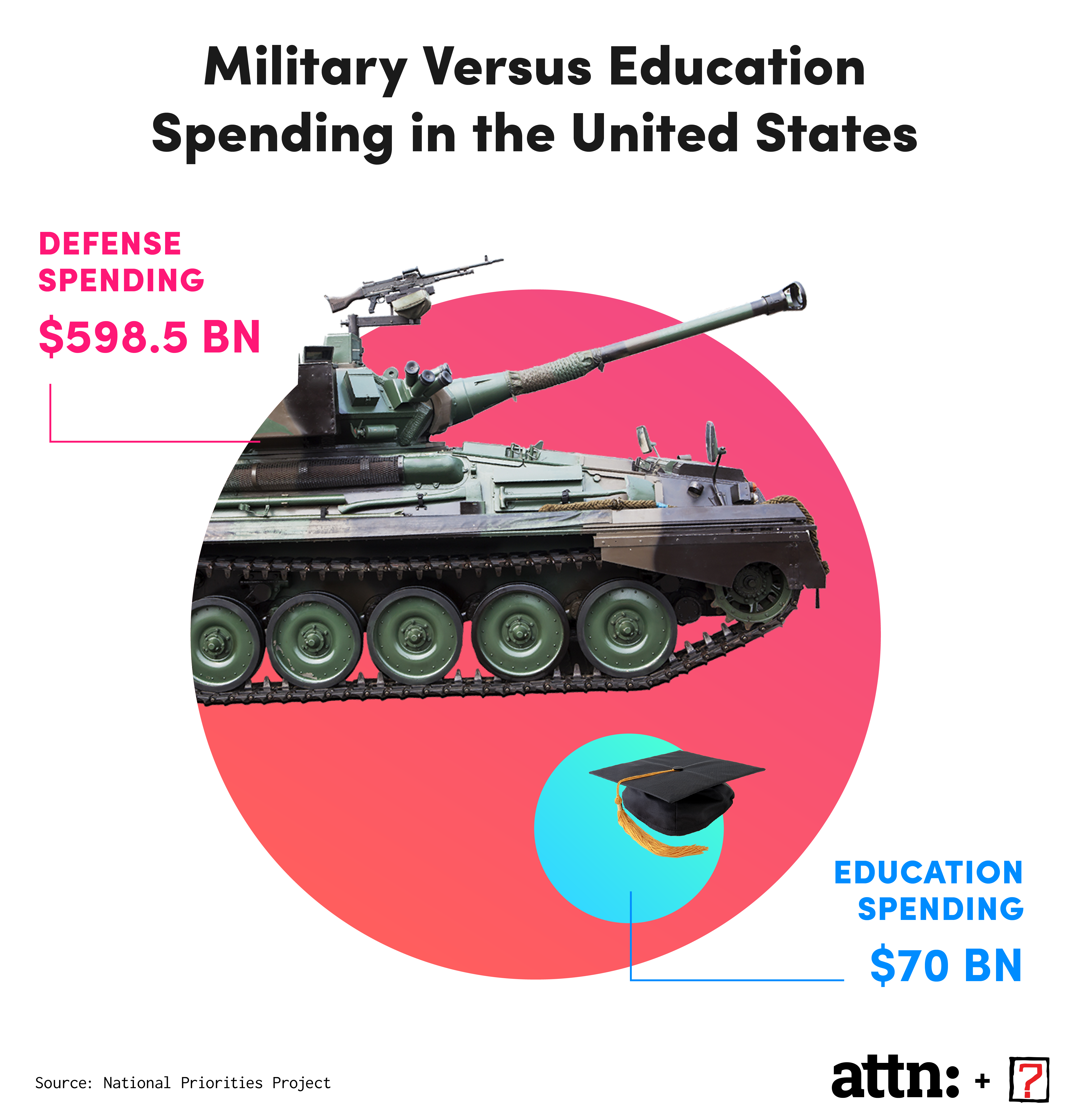笨狼發牢騷
發發牢騷,解解悶,消消愁美國的思維和行動,潛在的是美國的獨霸意識在指導,在理論上這是所謂美國惟我獨尊的優越(American Exceptionalism),說白了,跟中國曆代皇帝登基一堆文人胡謅無異,當然美國厲害,真的是打遍天下無敵手,值得自豪,不過讓大家信這東西,除了幾個馬屁精,恐怕不容易。就是一旦有了這意識,容人的心態變了,自己實力雄厚也不容易維持,不得不“遏製”。




Beipanjiang Bridge, possible the #tallest bridge in the world, has a vertical distance of 569.66 meters in Guizhou pic.twitter.com/JEdl8nUFj2— China Xinhua News (@XHNews) September 12, 2016
Chinese manufacturers once bought high-tech materials from overseas firms. Rising expertise means they now shop locally, altering global trade
ZHUHAI, China— Judah Huang works deep in the global supply chain at a Chinese company that makes nonstick coatings for cookie sheets, frying pans and grills sold in stores such as Wal-Mart.
Until a few years ago, the pans and griddles were made in China, but most of the materials that went into them were not. Mr. Huang imported most of the resins, pigments and pastes for his coatings from multinational suppliers such as Dow Chemical Co. of the U.S. and Eckart Effect Pigments of Germany.
Now, in a shift that is echoing throughout China’s vast manufacturing sector, he is buying more than 70% of those things from local suppliers.
“All these raw materials, now somebody in China makes it,” says Mr. Huang, chief technical manager of GMM Non-Stick Coatings, which has a factory in this city near Macau.
China, long the world’s factory floor, is taking control of a bigger portion of the world’s supply chains as well, causing a shift in global trade patterns by buying less from abroad.
The No. 2 economy after the U.S. pulls in huge volumes of raw materials and components, from aluminum to microchips, which it fashions into finished products such as iPhones and George Foreman grills for sale around the world. Those supply flows turbocharged global trade for years and made China one of the top export destinations.
Now those flows are shrinking, which is pummeling China’s trading partners, slowing global growth and providing further ammunition for politicians including Donald Trump who question the benefits of global trade.
Exports to China, which had risen nearly every year since 1990, fell 14% last year, the largest annual drop since the 1960s. They are down another 8.2% this year, through September. The decline helped shave 0.3 percentage point off world trade growth last year, and is a big reason that growth is expected to slow to 1.7% this year from the 5% a year it has averaged over the last two decades.
China’s trade surplus with the U.S. hit a record last year, largely because China is buying less and because global commodity prices fell.
Some of that decrease is the result of economic slowdown and a glut of goods—in China and globally. But China also is increasingly turning inward for its manufacturing needs, pushing to substitute local inputs for foreign, especially in plum, high-margin areas such as semiconductors and machinery.
That is disturbing for many global manufacturers, which have ceded low-end production to Chinese rivals but are banking on staying ahead in higher-end goods and ingredients that feature more advanced technology.
“The very high end is still not there,” says Ka Lok Cheung, head of operations in Zhuhai for Germany’s Eckart, noting that local rivals still have trouble maintaining consistent quality in some hard-to-make pigments. “But for many things, they’re really catching up.”
How Chinese Manufacturers Are Changing Global Trade Flows
Chinese manufacturers are buying more raw materials and components from domestic suppliers, taking a chunk out of imports from multinational companies. The push to use local inputs for manufacturing is spreading to higher-tech items and contributing to slower global trade growth.
The value of components and materials imported by China for use in other products fell 15% last year from the prior year, the largest annual decline since the global financial crisis, and it dropped another 14% in the first nine months of this year, according to Wind Info, a Chinese data provider that uses official Chinese customs figures.
Part of that decline is because Chinese exporters have been using less of those imports in their goods, data from an International Monetary Fund study suggests. The proportion of foreign-made inputs in Chinese exports has been shrinking by an average 1.6 percentage points a year over the past decade, and last year fell to 19.6%, from more than 40% in the mid-1990s, according to Chinese trade data.
Woodridge, Ill.-based Wilton Brands, which makes baking pans in China that use GMM’s nonstick coating, previously used steel from Japan or South Korea because Chinese steel had too many flaws, says James Hill, executive vice president of global operations. With improvements in Chinese steel, the factories now buy locally, which means that almost all of the pan, including the ingredients for the coating, is now produced in China, he says.
For low-end products, especially in sectors that have suffered from overcapacity, China’s Ministry of Commerce has levied antidumping tariffs against companies such as Dow Chemical and Eastman Chemical Co. that it views as undermining local industry by unloading goods in the country at too cheap a price.
Dow Chemical declined to comment on the tariffs but said it has sold the business that was affected and focused on higher-end chemicals. Those now account for more than 95% of its revenue in China, says Peter Wong, the company’s president for Asia Pacific. Eastman declined to comment.
To build domestic capabilities on the high end, the Chinese government last year announced a plan to raise the domestic content of core components and key materials to 40% by 2020 and 70% by 2025. It has been spending large amounts on research and development: $213 billion last year, or 2.1% of gross domestic product, according to state media reports. In June it pledged more money for “technological innovation.”
Biotechnology, aerospace and other high-tech-related exports to China fell 5% this year through September, compared with the same period last year, according to Wind Info, extending a two-year decline.
In specialty or higher-end chemicals—GMM’s industry—the amount China imports from the U.S. fell 8% in the first seven months of this year.
GMM was founded nearly a decade ago by U.S. chemical-industry veteran Ravin Gandhi and his Hong Kong business partner Raymond Chung, one of a wave of manufacturers attracted by China’s huge, cheap labor force and growing network of factories. GMM’s plant produces 20 metric tons of coatings each day, enough to stick-proof around 600,000 cooking pans or 200,000 electric grills.
For years, GMM acquired more than half of its raw materials from chemical giants such as DuPont Co. and Dow Chemical, with which DuPont is merging. It imported all of its two most important types of ingredients—silicone resins and aluminum paste, tricky, high-margin chemicals that Chinese suppliers weren’t able to make. GMM’s purchases in China tended to be lower-end ingredients such as solvents, which were easy to make and dangerous to ship.
The global recession and demand slowdown that started in 2008 pummeled chemical sales and worsened a supply glut. Chinese chemical factory utilization rates dropped sharply between 2008 and 2014, a sign of slack in the industry. China’s chemical makers, whose profits were getting squeezed by overcapacity and falling prices of cheaper ingredients, accelerated their push into higher-value areas.
Around 2012, salespeople from Chinese chemical makers started showing up at GMM with five-gallon buckets of resins and higher-end pigments that cost much less than their imported counterparts and passed the rigorous quality standards required by regulators such as the U.S. Food and Drug Administration, says GMM’s Chicago-based CEO Mr. Gandhi. GMM’s customers were pressing for cheaper prices and a wider variety of colors and features, such as smoother pan surfaces.
GMM started shifting purchases to local firms. Until last year, GMM bought silicone-based fluids for its coatings from Dow Corning. In 2015, it shifted much of its business to a local Chinese supplier.
Because domestic suppliers are 10% to 20% less expensive than foreign ones, says Mr. Huang, who previously worked for a German industrial-coatings company, the shift has been a “game-changer” for GMM. It has cut the cost of finished coatings by 10% from 2012, raising the company’s profit as much as 15% and allowed price reductions for customers. More than 70% of GMM’s 200 vendors are now based locally, compared with 40% five years ago, Mr. Gandhi says.
Dow Corning declined to comment.
One local producer whose chemicals GMM now uses is Fujian Kuncai Material Technology Co. Ltd., a maker of shiny pigments and aluminum paste based in Fuqing. After initially plying its wares to small industrial paint shops in China’s southern manufacturing zone, it increased investment in new products, set up a big R&D center in China and started working with Chinese universities to hone its technological edge. A year and a half ago, it formed a joint venture with a Netherlands-based distributor to sell its China-made pigments in Europe.
GMM now buys blue, silver-white, gray and copper-colored pigments from Fujian Kuncai rather than import them, says Mr. Huang. The pigments cost as much as a quarter less than the cost of an equivalent import, he says.
Around 10 miles from GMM’s Zhuhai factory, at the headquarters of German pigment maker Eckart’s main China unit, Mr. Cheung, the operations chief, says competition with local manufacturers is getting more intense.
“They really want to chase us,” he says. “They see the market demand is increasing for this better product.”
Eckart sells aluminum pastes to GMM. Five years ago, GMM imported those pastes from Eckart’s German facilities; now it uses pastes Eckart recently started making for less in Zhuhai. While Eckart still makes those pastes from raw materials it imports from its German and U.S. facilities, it is looking to purchase more locally as well, Mr. Cheung says.
For its part, Dow Corning, a subsidiary of Midland, Mich.-based Dow Chemical, is fighting back with lower-priced offerings that are only sold in China, says Dow Corning’s Greater China President Jeroen Bloemhard.
The company is looking for more opportunities to source domestically, particularly as it vies to supply China’s domestic market. “Fundamentally, there will be a preference to buy locally if it is actually possible,” he says.
Changing China is tough, even for a man with Xi’s powers
BY NIGHT the fires of Tangshan burn and the air stinks. In this city in the northern province of Hebei, more than 100,000 people work in factories making steel and many more in firms serving the industry. “Save energy and cut emissions,” reads a red slogan outside one plant, heavy machinery roaring within. Earlier this year China’s president, Xi Jinping, ordered the steel business to cut production. Small and inefficient mills like this one were supposed to close and larger ones to shut down some furnaces. Yet many still operate around the clock. Their city is close to Beijing, virtually on Mr Xi’s doorstep, but the steel bosses openly flout his orders.
Nearly four years into his rule, Mr Xi is commonly described as the most powerful Chinese leader in decades. He has taken charge of all the most important portfolios, cultivated a huge personal following and purged his opponents. Bypassing ministries, he rules through informal “leading small groups”, heading so many of them that foreign commentators have labelled him “chairman of everything”. Rumours fly (without evidence) that Mr Xi may even try to extend his powers beyond the normally allotted ten years. Given his seeming strength, it would be logical to suppose that he could do almost anything he pleases. The toiling mills of Tangshan, however, suggest how hard the president often finds it to persuade local officials to carry out his wishes. Mr Xi may be chairman of everything, and he may well be stronger than any leader since Deng Xiaoping. But in a country so vast, diverse and with so many entrenched interests, he often seems to be master of nothing.
Mr Xi spars with crusty generals, powerful bureaucracies and large state-owned enterprises controlled by the central government. But an even greater impediment to his power is an age-old one: local authority. This is reflected in a popular saying that refers to the compound in Beijing where China’s leaders live and work: “Policies do not go beyond Zhongnanhai.”
Xi’s out of control
As the Communist Party prepares to hold a five-yearly congress late next year at which sweeping leadership changes will be announced, Mr Xi is fighting on two broad fronts. One is with rivals in Beijing who want the reshuffle to favour their own cronies. The other is with footdraggers in the provinces who want to do their own thing, regardless of who wins in the capital. It is with the wider country in mind that Mr Xi is now focusing on what he calls “party building”, ie, instilling loyalty and discipline into the party’s myriad cells. This will be a theme at an annual four-day meeting of 350 or so of the party’s most senior members that is due to begin on October 24th. In July Mr Xi warned starkly what a slackening of discipline could mean: “Our party will sooner or later lose its qualifications to govern and will unavoidably be consigned to history.”
China is eminently capable of getting things done, even in the face of considerable NIMBYist resistance. Its thousands of miles of high-speed rail and its mushrooming cities testify to that. But because its leaders are afraid to delegate power, they can give their attention only to a limited range of priorities. Many government schemes, particularly ones that are tricky, pricey or unpalatable to local politicians, go largely unheeded.
Strikingly, Mr Xi even sometimes fails to implement policies that he has declared to be a priority. He reportedly said that he had the capacity to tackle only one big economic issue this year, and that was to trim the bloated steel and coal industries. As a result, in February, the government revealed plans to cut steel capacity by 100m-150m tonnes in the next five years and surplus capacity in coal production by 500m tonnes. To give his edict extra prominence, officials took the rare step of inviting foreign journalists to Zhongnanhai to quiz a deputy finance minister on it.
Yet, as the smoky streets of Tangshan show, the president’s stentorian words do not always translate into local deeds. Since February, steel output has risen nationwide every month year-on-year (see chart). By the end of July producers had cut less than half of the capacity they were supposed to. Custeel, an industry body, says this includes many facilities that had already been mothballed. The central government admits that only four provinces have made substantial progress out of the 22 for which it has published results. Only one of the four, Jiangsu, is among the big steel-producers.
Local businesses often pay more heed to the market than to mandates. Some larger mills relit their burners as global steel prices rose. Local governments have their eye on their revenues, too. Hebei produces nearly a quarter of China’s steel. In places like Tangshan the steel industry contributes substantially to tax revenues. Local banks risk writing off large loans if mills have to shut. At one, Tangshan Baotai, workers live on-site in low, grey housing. Those who lose their job lose their home as well. Local governments fear that lay-offs could fuel unrest.
People desperate to get on China’s property ladder may wish that their plenipotentiary president could do better. Mr Xi was clearly behind measures announced this month aimed at holding down soaring house prices in the biggest cities. But this effort seems as doomed as previous ones, partly because local governments delight in the market’s surge. Selling land is a big source of their income; big cities control a very limited supply of it, because of tight restrictions on their expansion.
The weakness of Mr Xi in the face of local power has been evident even in his efforts to curb tobacco use (his wife, Peng Liyuan, is an “anti-smoking ambassador”). In 2015 he backed a stringent ban on smoking in indoor public places in Beijing. Yet a recent draft of a law to enforce this nationwide offers a big loophole: smokers would still be able to use designated indoor areas. The interests of tobacco-producing areas may explain why. In Yunnan province in the south-west, tobacco accounts for over half the tax take, compared with 7.5% of government revenue in China overall.
Policies that lack the president’s personal endorsement are all the more likely to stall. For example, there has been little progress in reforming hospitals, despite widespread anger at doctors who boost their incomes by prescribing expensive drugs that patients have to pay for. Local officials reckon this gouging is preferable to paying doctors better wages from government funds.
Despite outcries, too, over appalling lapses in food safety, and high-level promises to improve it, enforcement has not been markedly strengthened. Provincial agencies do not have the will, capacity or financial incentive to regulate the food chain. Officials in Beijing privately admit that localities cannot afford to carry through a nationwide plan for reducing soil pollution that was announced in May.
The problem is partly one of the party’s own making. Since the late 1970s the central government has deliberately delegated much decision-making to lower levels of government, encouraging local officials to launch pilot projects and spread good practice. This has helped the economy become agile and adaptable. But it has also made top-down government more difficult, sometimes to the detriment of reform. China’s political system displays “fragmented authoritarianism”, as Kenneth Lieberthal of the Brookings Institution calls it.
Raising the red lanterns
Market forces, rather than political ones, increasingly dominate government decision-making beyond the capital—as long as social stability is not compromised. And with the flourishing of private enterprise, and the collapse of many state-owned firms, the party’s once omnipresent and all-powerful cells have atrophied and weakened. So Mr Xi wants to put politics back in command. In a private speech he gave only a month after taking power in 2012, he railed that the Soviet Union had collapsed because nobody in the party had been “man enough to stand up and resist”; he noted that Russia’s corrupt security services had “left the party disarmed”. He evidently saw signs of similar laxness taking hold in China.
Mr Xi’s fierce campaign against corruption has been aimed at tightening his grip and strengthening the party’s discipline (as well as settling scores with enemies). Hundreds of thousands of officials have been punished for graft. At the same time, Mr Xi has tried to instil a sense of accountability among local officials. The country’s latest five-year plan (a quaint reminder of the days when the central leadership pulled more levers) for the first time makes local officials personally liable for causing environmental damage, even if it is discovered only after they have left office. The government now threatens to punish civil servants who ignore court rulings or fail to observe party policies.
But it is hard to legislate for loyalty. The party’s discipline-enforcement agency said this month that party leadership had “weakened” in four provincial-level areas, implying that this had continued even after the agency had read them the riot act. The errant regions include the municipality of Tianjin near the capital. Jin Canrong of Renmin University in Beijing said in a recent lecture that Mr Xi was facing widespread “soft resistance” among local elites. Instead of openly opposing him they were practising “inaction” instead. Mr Jin concluded that all policies were “empty”.
The fight against corruption may have scared officials, but even fear is no match for bureaucratic inertia. Next week’s gathering of party leaders is unlikely to help much. Xinhua, a state news agency, says they will adopt measures to improve the party’s ability at “self-cleansing, self-consummating, self-innovating and self-enhancing”. That does not sound like much of a game-changer.
At least the meeting may help Mr Xi strengthen his position in Zhongnanhai. It will launch preparations for next year’s congress, after which five of the seven members of the Politburo’s Standing Committee are due to retire, along with one-third of the Politburo’s other 18 members. The Politburo’s current make-up was largely decided by Mr Xi’s predecessors. This will be his chance to stack it with his allies.
There will be much speculation about which one of them, if any, will succeed him. Some analysts believe he has no successor in mind, and interpret his willingness to flout party convention as a sign of Mr Xi’s self-confidence. Yet it may be that he does not want to start grooming an heir (in China, this tends to begin very early). If so, that could suggest something else: that neither at the centre nor in the provinces does Mr Xi feel strong enough. Therefore he cannot trust anyone else with what he calls his “Chinese dream” of the country’s “great revival”.




